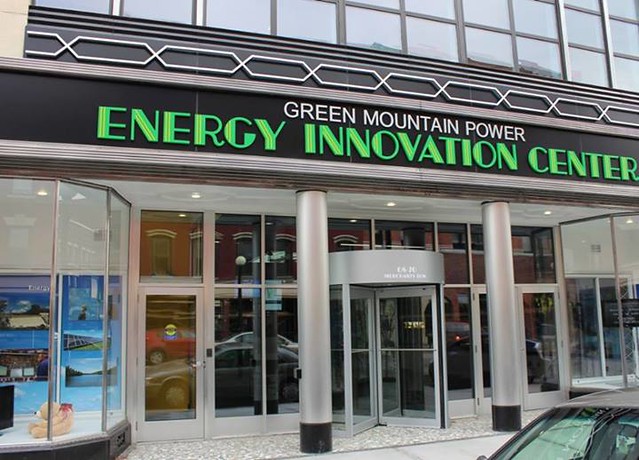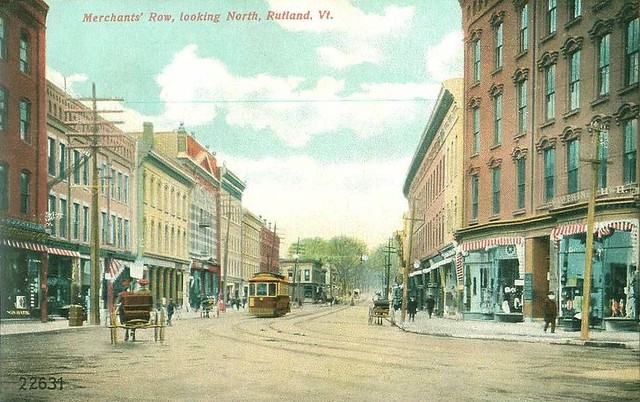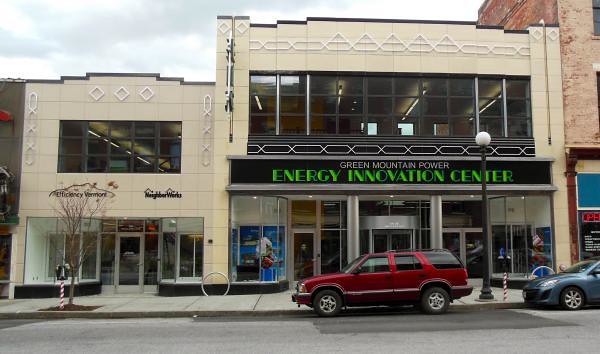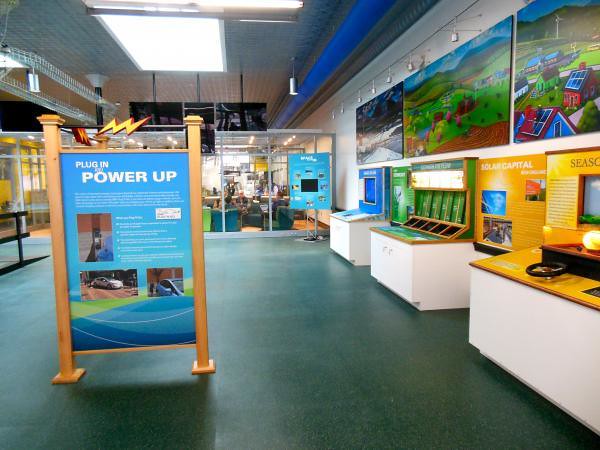The very embodiment of sustainability, in a small city

Posted May 9, 2014 at 4:31PM
A sustainable built environment isn’t one thing. It is many things, functioning best when assembled together in the right places with the right ingredients. Context is everything: a so-called “green” building won’t be green in its performance if it’s in the wrong place, contributing to suburban sprawl and requiring people to drive long distances to get to and from it. Heck, an ordinary building without any green bells and whistles at all, if placed in a walkable, transit-accessible downtown environment, will actually use less energy and emit lower levels of greenhouse gases than a LEED-certified structure in sprawl, because central locations reduce driving distances and make it easier for people to use less polluting transportation alternatives.
That’s why I’m all in for revitalization of downtowns and inner-city neighborhoods, when done well: revitalization recycles land, infrastructure and buildings, while reducing pollution.
That’s also one of the reasons why I support most historic preservation. As long as historic buildings are in a walkable context, they tend to be as green as buildings come. The National Trust’s Preservation Green Lab did a study showing that it takes decades for a new energy-efficient building to overcome the energy deficit created by demolishing an older building and constructing the new one. And that study didn’t even consider transportation, since it assumed the new building would be in the same place as the old.
I would argue that environmental performance may not be the best reason to support preservation, though. My favorite reason, as I wrote in People Habitat, is that a broader definition of sustainability requires attention to legacy. Our older built environment provides important links to where we came from as a culture, and thus who we are. How can we learn from the past if it isn’t there?
Most discourse about revitalization and preservation – and I confess that includes some of my own writing – tends to focus on big cities, where in the second half of the 21st century inner districts were severely disinvested as money, people and opportunity fled to the suburbs. But we shouldn’t forget that smaller towns and cities were disinvested, too. Main Street, that icon of American culture, became a ghost of its former self in too many communities as storefronts were vacated.
Yet the traditional American Main Street is a terrific model worth preserving and emulating. It meets so many of the basic aspirations of today’s smart urbanism: it’s walkable, compact, centrally located, with many types of shops and services integrated together, frequently with places to live on upper floors or in houses a short walk away. It has a human scale, neither skyscrapers nor sprawl but something in between. Does the past point the way to a more sustainable future? Some smart observers strongly believe so.
And all that brings me to Vermont’s Green Mountain Power, a small electric utility serving about 250,000 customers. GMP has put together a truly impressive combination of sustainability factors in two rehabbed, side-by-side buildings in Rutland, Vermont, population 16,495 (as of 2010). The combined facility is on a street called Merchant’s Row, a “Main Street” in all but name dating back to the mid-19th century. The buildings, formerly retail but vacant for years, are now together called the Energy Innovation Center, which opened last November.
The new Center is going all-out to be internally green, according to a press release:
“Steve Costello, GMP’s vice president for generation and energy innovation, said the building was itself a model of innovation, with air-source heat pumps, two solar arrays, small-scale wind, high-efficiency LED lighting, light tubes, triple-pane windows, efficient skylights and motion sensors to reduce artificial lighting needs. The building uses direct current to power lights, and includes energy storage and super-dense insulation to reduce heating needs – yet the restoration preserved historic features including a stunning metal ceiling, stainless steel window frames and a terra cotta art deco facade.”
Costello said the company “wanted to make a statement about efficiency and our commitment to Rutland with the building.”
The Energy Innovation Center not only houses GMP employees, but also displays exhibits about renewable energy sources; it also houses offices of two other organizations, Efficiency Vermont and NeighborWorks of Western Vermont. Efficiency Vermont is a nonprofit organization that provides technical assistance, rebates, and other financial incentives to help households and businesses with energy-efficient equipment, lighting, and approaches to construction and major renovation. NeighborWorks provides Vermonters in three counties with education, counseling, and access to affordable loans needed to purchase, improve and help keep their homes. It is pretty easy to like the three businesses that now occupy the restored site of what was recently one of downtown Rutland’s most blighted facilities.
The project comprises the complete restoration of a 1925 Art Deco building and an adjacent wood frame annex dating to the 1860s. It was built by Russell Construction Services, with design by NBF Architects, both of Rutland. Exhibits, which focus on energy efficiency and the environment (especially solar, wind, and hydro power sources), were designed and built by The Imagination Company of Bethel. Tours of the building’s energy-efficient equipment, such as the rooftop solar displays and air-to-air heat pumps, are expected to become regular events.
In other words, this facility has just about everything someone like me could ask for in sustainability attributes: revitalization; walkability; historic preservation; advanced green building features; and, to top it off, a substantial amount of space devoted to environmental education. It appears to do a lot of things very well indeed.
Downtown Rutland is listed on the National Register of Historic Places, as are 108 of its buildings. I first learned of GMP’s Energy Innovation Center through an article written by Katherine Flynn for Preservation magazine.
Move your cursor over the images for credit information.
Related posts:
- Are Main Streets a thing of the past? Is that OK? (February 4, 2013)
- Helping neighbors plan their own communities' future: a model for inclusive revitalization (March 28, 2014)
- Augusta's new master plan for revitalization looks like a winner (by Lee Epstein) (October 16, 2013)
- The greenest (historic) building is the one that's in the right context (June 16, 2011)
- Assembling the green facts to support preservation (March 7, 2011)
- The revival of Main Streets (July 9, 2010)




